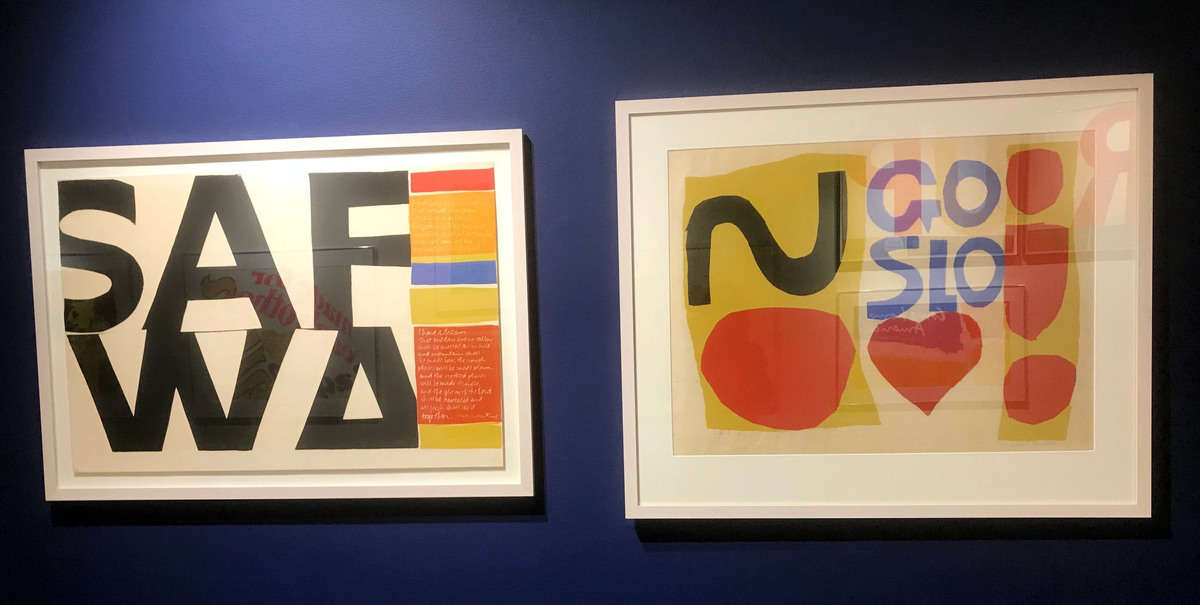An interpretive exhibit of history of communal book making includes a reconstruction of a printing and binding shop at Middle Amana. This site is opened from 10 to 4 on Saturdays. The long and continuing Amana book publishing program aligns with a Protestant dedication to literacy, scriptural interpretation and individual spiritual experience. Book-making was accentuatedContinue reading “Print Shop and Bindery in Amana”
Category Archives: Uncategorized
Katelyn Foster wins Bentz Scholarship
With winter break around the bend, campus wide student employee supervisors contemplate how to cope with the dramatic drop off of help to be had over the holidays. This poses unique challenges, but most of all it makes us appreciate student employees that much more. Here in Preservation/Conservation at the University of Iowa Libraries studentsContinue reading “Katelyn Foster wins Bentz Scholarship”
Conservation Staff Install Works From the Iowa Women’s Archive at Dubuque Museum of Art
Recently a group of staff from the University of Iowa Library’s Conservation Lab journeyed up to Dubuque to install some pieces lent from the Iowa Women’s Archive (IWA) to the Dubuque Museum of Art. The materials and artwork are from the Josephine Pletscher Papers collection, donated to IWA by Kimberly Kirkpatrick Sparling and Ann SaylorContinue reading “Conservation Staff Install Works From the Iowa Women’s Archive at Dubuque Museum of Art”
Box Making Day
Friday, June 10, 2016 It was all hands on deck yesterday, as staff made boxes for the many items awaiting protective enclosures in the conservation lab. The boxes ranged from the simple 20-point card 4-flap wraps to the more complex, double-walled, fabric covered hinged box.
Assisting Artists After Hurricane Sandy
Friday, February 8, 2013 When we inspect an artist’s work, we also ask for the story of the piece to learn more about its history and composition. The pieces that this artist brought in were her final project before graduation where she used as pure a blue, red, and yellow that she could get. SheContinue reading “Assisting Artists After Hurricane Sandy”
Celebrate ALA Preservation Week: Learn about Disaster Preparedness
Thursday, April 21, 2011 FREE ALCTS webinar for Preservation Week! On Tuesday, April 26, 2011, Nancy E Kraft, UI Libraries Preservation Librarian will present a webinar, “Accidents Happen: Protecting & Saving Family Treasures” at 2pm Eastern, 1pm Central, noon Mountain, and 11am Pacific Time. It’s an hour in length. Accidents and disasters happen. When itContinue reading “Celebrate ALA Preservation Week: Learn about Disaster Preparedness”
A Big Box for a Big Book
Say you have a really big book and need to house it in a box. How can you get a two foot thick book in and out of a lidded box? Answer: a tailgate This double walled box with lid and tailgate (side flap) was made by Conservation Assistant and boxmaker extraordinaire Linda Lundy. ItContinue reading “A Big Box for a Big Book”
10,000 page book bound at Conservation Lab
In Celebration of Iowa City being named a “City of Literature” by UNESCO, Dr. Alphabet (Dave Morice) sponsored by Sackter House Media has completed his largest, longest, world-record breaking poetry marathon by creating a 100 volume work of 10,000 pages in 100 days. The marathon was a highlight of a four-month exhibit at the University of IowaContinue reading “10,000 page book bound at Conservation Lab”
Exciting forum at ALA Annual
The forum Strategic Future of Print Collections attracted over 300 librarians. The forum was produced by Debbie Noland, Library Binding Institute, and Gary Frost, University of Iowa, and was sponsored by the Preservation and Reformatting sub group and the Rare Books and Manuscripts sub group of the American Library Association. The program featured three presentationsContinue reading “Exciting forum at ALA Annual”
Rare Book Exhibit Completed in Peru
A University of Iowa Library Preservation team Gary Frost, Conservator, Joyce Miller, project support and technician and Bill Voss, Exhibit Conservator, has completed a project to prepare and install a 26 case comprehensive exhibit of the treasures of the Library of the Convent of the Recoleta in Arequipa Peru. The two week project (May 26Continue reading “Rare Book Exhibit Completed in Peru”

